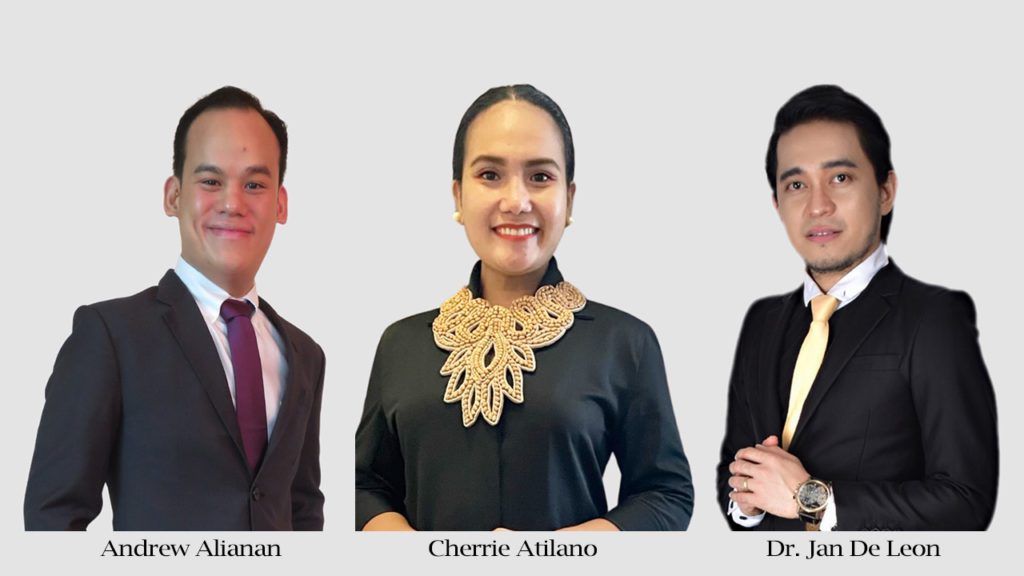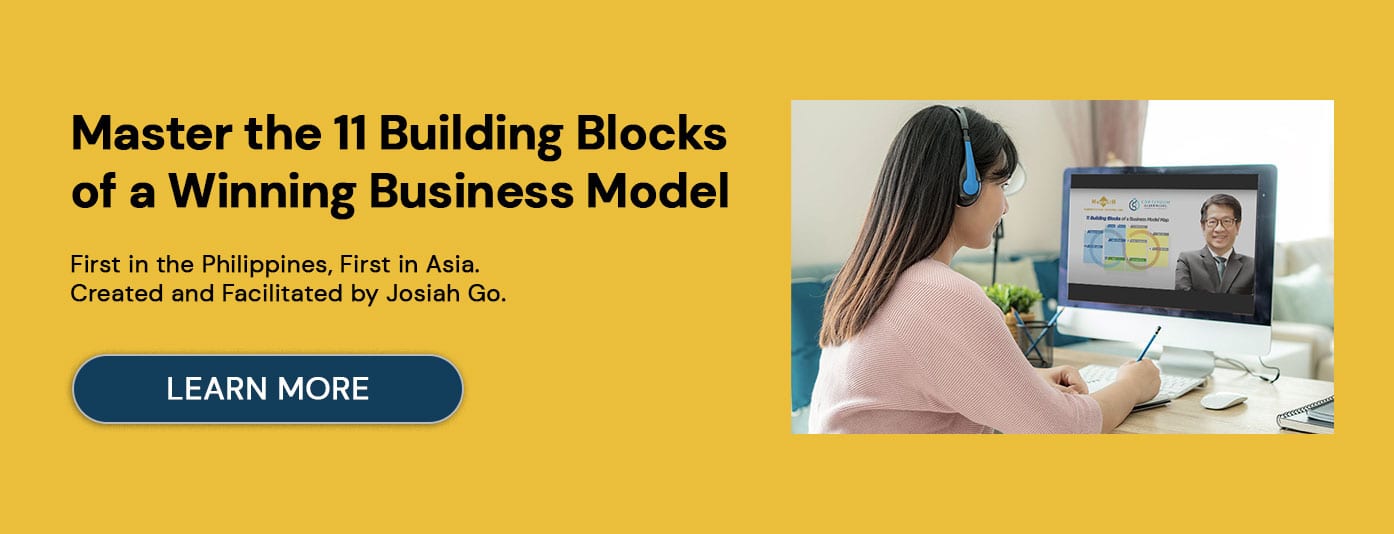
At the recently concluded 16th Mansmith Young Market Masters Awards (YMMA), we asked three of the marketing rockstars to share about innovating the product or service concept. They are Andrew Alianan, Marketing Manager of North Ridge Foods and YMMA Awardee for Export Marketing, Cherrie Atilano, Founder of AGREA and YMMA Awardee for Advocacy Marketing. and Dr. Jan De Leon, Academics & Services Director of Dr. Carl E. Balita Review Center and YMMA Awardee for Service Marketing,
Here are the learning points from the YMMA winners:
Q1: Were there any significant barriers you experienced trying to get your organizations to support new product or service concepts? How did you overcome them?
Andrew: We operate on a traditional business model with my parents leading on top, so new ideas were initially met with varying degrees of resistance since they were perceived as deviating from time-tested and proven methods. Whereas proposing certain innovations or updates to the system proved challenging at first, using data through proper research and validation, coupled with controlled testing, eventually made the traditionalists in our organization accept changes slowly. It really took time, but patience paired with data proved to be key. Many of the things we’ve done since then have been based on careful research, benchmarking, and analysis.
Cherrie: Human-centered approach is the key to our work. This has been detrimental in overcoming significant barriers. Every time we launch a new product or service, we both consult our partner farmers as well as our potential market. It takes a lot of effort in facilitating this process. After thorough consultations on both sides of the supply chain, we make decisions based on product viability in terms of price, inefficiencies that we can fix in the supply chain so that the farmers will be well compensated and the impact to our customers that could build loyalty.
Jan: Innovation, agility and adaptability are major components of the culture of Dr. Carl Balita Review Center, thus creation of new products and concepts are integrated in the system. From the 6 major review programs, we now have 35 review programs catering PRC board exams, civil service exams, qualifying exams and even language programs. The greatest barrier in a new review program is that we will be entering a new profession, with different contents, culture, approach and competitors. We overcome this barrier by applying what we do best in our major programs with the best results, such as nursing and education, to all the new programs like applying all the processes and evaluating the results of our scorecards.
Q2: There is no innovation without commercial viability. How do you assess whether your new ideas can thrive commercially in a competitive market?
Andrew: With export, we rely a lot on insight backed up by research. Being on top of trends, studying consumer preferences, knowing current market needs and wants are always key. We always make it a point to ask around, study products from all angles of the supply chain, and get consumer feedback from test markets and also from our internal quality assurance team.
Cherrie: Since we work in the agribusiness sector which suffers high volatility in terms of prices based on the massive effect of importation and/or weather patterns, it has been a practice to do research on commercial viability. We also develop a business plan for every innovation or business opportunity before launching. On a broader level of consideration if the innovation is commercially viable, we ask the hard questions that have been the heart of our innovation thinking approach, on how our innovation impacts society and preserves the environment while making a profit; always a triple bottom line approach.
Jan: Critical evaluation and competitive advantage are the things that we do to make sure that our product will thrive in a competitive market. We assess and evaluate the current market scenario and diagnose our current conditions. From the data that we have, we will also integrate the quality that we have in our successful programs and check its applicability amidst the variables of the new programs. But most importantly, we have to offer and try it until we reach the best results, as our results will speak and will make us grow in a new program.
Q3: How do you identify the areas of your business model that are prime for new pivots? What is your experience?
Andrew: Over the years, we’ve developed a habit of asking ourselves how we can further better ourselves within the industry. It’s a constant process of innovation to ensure we stay ahead of the game no matter the situation. For instance, during the pandemic, we had to maintain a steady stream of products despite suppliers struggling to meet demand, so we ended up converting a bigger part of our operations to facilitating toll-packed items for consumers. This meant becoming more involved in production of certain product lines and securing sources, which ultimately enabled us to stay afloat and still guarantee service level fluidity to our distributors and customers despite the many limitations brought about by the pandemic.
Cherrie: We always focus on identifying our strengths as a company, the skill sets we have and the financial requirements we need to invest. Most of the time, we do experiments on the model farm on certain technology or agricultural products we like to commercialize before we pivot considering that we engage the smallholder farmers. We try to be very careful, as every intervention we provide as part of the business pivot, they are betting their entire livelihood. We also consider the market potential and the technology to be adapted if both are feasible to be implemented knowing the viability of the business. We do further participatory consultations with our stakeholders, in our case, the smallholder farmers and involve scientific groups also in our consultation. Once all set criteria are covered, then we pivot launch the business.
Jan: We have to collaborate to work synergistically as a team. We identify the strengths of our organizations and the results that we have and use them to see opportunities for the new pivots. Some of our new pivots from are strength are the CBRC Health Professionals Network, CBRC Vice and Review Program Diversification. First, we have been producing tens of thousands of nurse professionals for more than a decade , and now we help and assist them through the health professionals network that is instrumental in the vaccinations of almost 1 Million Filipinos. Next, the CBRC Vice is an offshoot of how we do our final coaching in the biggest venues in the Philippines as well as our experience in the online review for 14 years. Lastly, when most of the competitors are idling or closing, we chose to open more review programs.
Q4: What conditions or qualities do you think should be present in an organization and its leaders and workers in order to support innovation?
Andrew: There has to be a level of faith and openness present – faith in numbers or data, and an openness to innovation or to challenging proven practices. It’s true that we have to be grateful and appreciate all these successful strategies that have enabled us to grow to a certain size, but we have to continuously innovate in order to stay relevant and to evolve with the times. Another important thing to remember is communication. Communicate goals and objectives well with all levels of business so that everyone is on board and understands their role within the unit. As they say, teamwork makes the dream work!
Cherrie: Empowering everyone in the organization to make decisions and take action will positively contribute to building a culture that supports innovation. In our company, it is necessary that everyone cares for our cause and the greater mission, if people feel connected to this mission, there’s a lot of motivation for them to be innovative. As a leader, it is necessary to keep the team in the loop on the company’s strategies, milestones, and challenges; it is very important to invite them for their input also. When employees are included in the infancy stage of the processes and plans, they will be more motivated to see results and the effective completion of the project. This will fuel their active participation in making things happen and inculcates innovation in more projects to come.
Jan: For me the things that an organization must have to support innovation offer better if not the best results is the CARL Management Process: Communication, Agility, Receptiveness and Loyalty. In terms of communication, it is imperative that the vision, purpose, tasks, plans and goals for innovation must be communicated well by the management to the people. The culture of Agility is a must, that there shall be a solution to every problem and new ideas are being heard and processed. Everyone in the organization must be receptive to every change and are able to execute it to achieve the best results. Finally, Loyalty or commitment to the brand and the goals of the organization, as it will fuel everyone to work together amidst differences.
***
Josiah Go is chair and chief innovation strategist of Mansmith and Fielders Inc. He is also the co-founder, alongside Chiqui Escareal-Go, of the Mansmith Young Market Masters Awards (YMMA) since 2006. The search for the 19th Mansmith YMMA is currently ongoing. For more information, visit www.youngmarketmasters.com.
See more articles on Brand Innovation.


